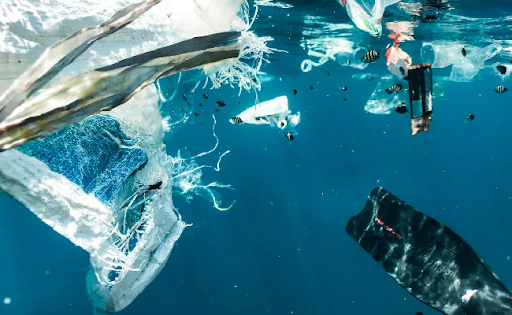
In a groundbreaking discovery, Japanese researchers have witnessed microplastics in clouds for the first time. This finding, highlighting concerns about the environmental impact of these tiny plastic particles on both the atmosphere and human health, could have vast influences.
On September 28, 2023, Japanese researchers confirmed a concerning discovery: microplastics are exhibited in clouds, possibly influencing the atmosphere in ways that are not yet fully understood.
In a study issued in the journal Environmental Chemistry Letters, scientists from Japan launched a tour to Mount Fuji and Mount Oyama to set up foggy cloud water samples. They operated developed imaging techniques to investigate the physical and chemical characteristics of these samples.
The research team recognized nine distinct polymer types and one type of rubber among the airborne microplastics, ranging in size from 7.1 to 94.6 micrometers. Every liter (0.26 gallons) of cloud water tested contained between 6.7 to 13.9 microplastic particles.
Lead author of the study, Hiroshi Okochi from Waseda University, issued a stark warning: “If the issue of ‘plastic air pollution’ is not addressed proactively, climate change and ecological risks may become a reality, causing irreversible and serious environmental damage in the future.”

Microplastics, defined as plastic particles estimated under 5 millimeters, originate from sources like industrial waste, textiles, synthetic car tires, personal care products, and more. They have earlier been found within fish, nested in Arctic sea ice, and even exhibited in the snows of the Pyrenees hills between France and Spain.
While the existence of microplastics in diverse environments has been recorded, their transfer mechanisms to such diverse areas have remained ambiguous, with narrow research on the airborne transportation of these particles.
The researchers reported in their paper, “To the best of our knowledge, this is the first report on airborne microplastics in cloud water.”
Highlighting the threatening implications of this discovery, Waseda University emphasized that microplastics are consumed or inhaled by both humans and animals, with traces found in multiple organs. They alerted that around ten million tons of these plastic particles enter the ocean, ultimately being discharged into the atmosphere via ocean spray, which could make microplastics an essential component of clouds. This, in turn, could lead to impurity of the food and water we use through what they term “plastic rainfall.”

Emerging evidence has linked microplastics to a spectrum of health effects, including impacts on heart and lung health, cancer risks, and extensive environmental damage.
While concerns about the possible effects of microplastics in aquatic environments have been rising, this discovery marks the first documented verification of microplastics in clouds.
As reported by Nikkei Asia, the research team, led by Professor Hiroshi Okochi from Waseda University and others, examined 44 water samples from clouds at the summits and bases of Mount Fuji and Mount Tanzawa-Oyama, west of Yokohama in Kanagawa prefecture. Analyzing the samples, the group discovered a total of 70 microplastic particles, can be sorted into nine types.
The existence of microplastics in the environment poses a complex and intricate environmental and public health dispute, demanding global attention and unified efforts to address it efficiently.
The United Nations reports that “the number of scientific investigations has increased, along with public interest and pressure on decision-makers to respond.”
The team of scientists has shown their dedication to continuing their research into these remarkable findings to delve deeper into the specifics. The presence of microplastics in clouds can impact the climate and pose health risks to humans, making further investigation essential.





